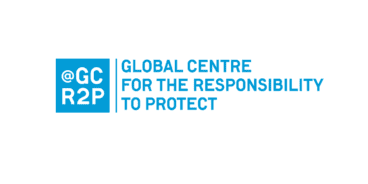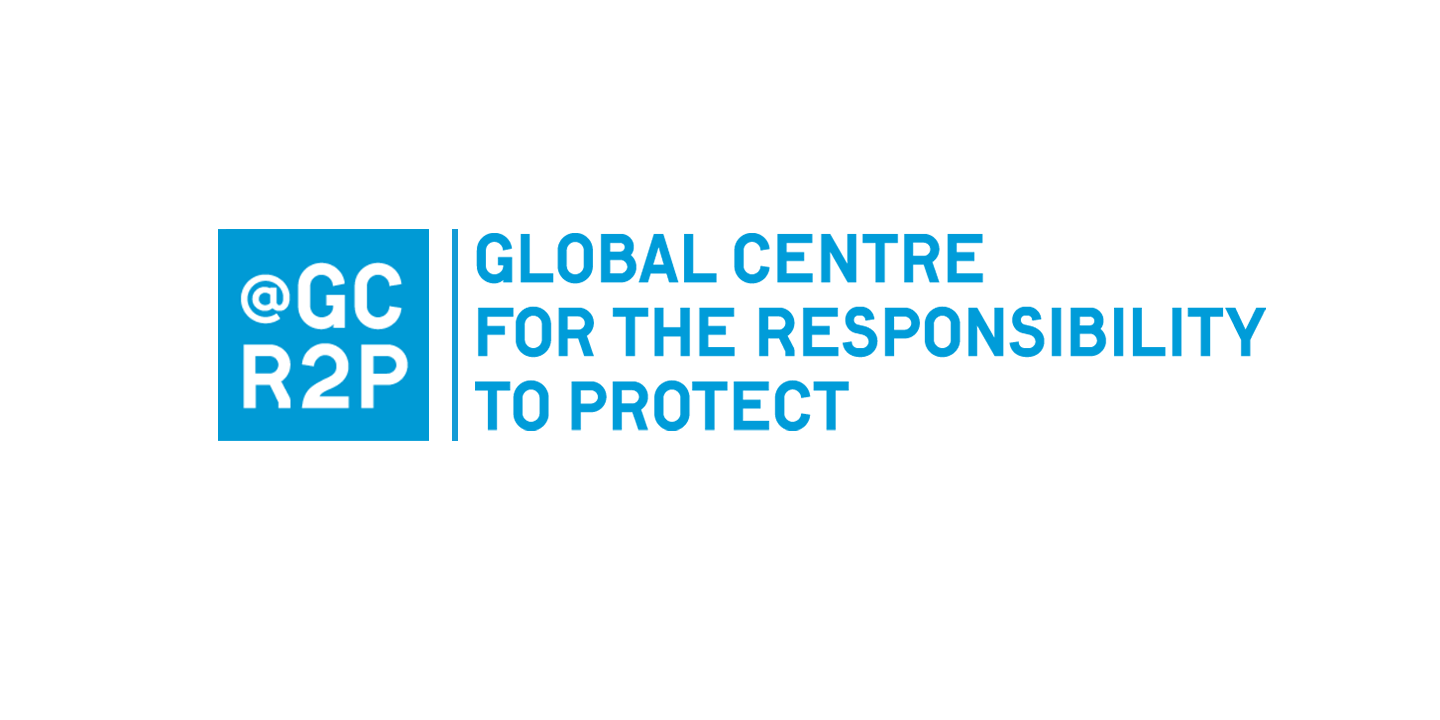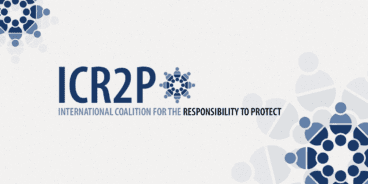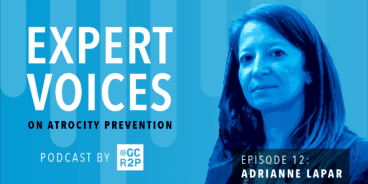

Summary of the UN Secretary-General’s 2023 Report on R2P, Development and the Responsibility to Protect: Recognizing and Addressing Embedded Risks and Drivers of Atrocity Crimes
The 15th report of the UN Secretary-General on the Responsibility to Protect (R2P), entitled “Development and the Responsibility to Protect: Recognizing and Addressing Embedded Risks and Drivers of Atrocity Crimes,” considers the intersection between mass atrocity crimes and development. In doing so, the Secretary-General recognizes the ways in which developmental deficits and consequent insecurity exacerbate the risk of atrocity crimes as well as how states can leverage sustainable development to build conditions for peace and resilience to atrocity crimes.
KEY POINTS
The Global Centre for the Responsibility to Protect would like to highlight the following key points from the report:
-
- Developmental deficits and consequent fragility are themselves risk factors and potential triggers for mass atrocity crimes, especially when combined with other factors.
- Addressing global challenges and building more resilient societies are critical to the prevention of mass atrocity crimes. Development can aid in fulfilling these needs by creating the conditions for sustainable peace, equitable growth and accountable governance.
- Mass atrocity situations, especially in conflict settings, threaten developmental progress and exacerbate existing sources of fragility. Realization of the Sustainable Development Goals (SDGs) will not be possible without addressing atrocity risk factors that persist in many places around the world.
- The Secretary-General urges states to center atrocity prevention in their development efforts. This should include utilizing a whole-of-government approach to atrocity risk prevention and response and ensuring development support to other states focuses on reforms that reduce atrocity risks.
SECTION II: DEVELOPMENT IN THE CONTEXT OF ATROCITY RISK AND DRIVERS
Despite initial progress following the adoption of the 2030 Agenda for Sustainable Development in 2015, various global challenges, including the enduring impacts of the COVID-19 pandemic, armed conflicts, climate emergencies, and the finance, food and energy crises, have resulted in stagnation or regression in steps toward meeting SDG targets.
The Secretary-General acknowledges that chronic underdevelopment and extreme poverty, food insecurity, inequality and vulnerability in conflict settings present significant risks for mass atrocities. Environmental factors, such as climate change, extreme weather events and water scarcity, may exacerbate inter-communal disputes and grievances, and could spawn conflicts, violence and mass atrocity events, often along ethnic, regional and religious lines.
The Secretary-General also acknowledges various governance-related drivers of atrocities, including practices that perpetuate discriminatory ideologies and exclusionary policies, absence or deterioration of the rule of law, historical impunity and the sudden deterioration of human rights. In this regard, the report references SDG 16 and the commitment by member states to promote peace, justice and inclusion, particularly highlighting the capacity of development to promote inclusive, democratic societies and institutions that are equipped to mitigate multi-dimensional vulnerabilities. The Secretary-General also warns that development programs should be sensitized to discriminatory ideologies and policies of exclusion that deny specific identity groups their social, economic, cultural, civil and political rights and should be designed to strengthen national human rights protection systems.
SECTION III: LEVERAGING DEVELOPMENT FOR THE PREVENTION AND RESPONSE TO ATROCITIES
The Secretary-General provides an overview of the responsibility and role that stakeholders at the national, regional and multilateral levels have toward sustainable development and R2P.
The fundamental responsibility and role of States
While noting that the primary responsibility for sustainable development and R2P lies with the state, the Secretary-General highlights eight avenues through which states can leverage development to prevent atrocities: high-level political commitment, national ownership of R2P and a whole-of-government approach; developing capacity through national mechanisms for atrocity prevention; strategies aimed at poverty alleviation and economic equality; improving measurement and monitoring of sustainable development indicators, particularly with a lens of assessing atrocity risk; targeting governance reforms toward rule of law and accountability measures that address atrocity risk; strengthening the national human rights protection system to monitor risks and protect at-risk populations; addressing armed conflict and advancing peacebuilding; and inhibiting the means to commit mass atrocities.
The Secretary-General notes that a whole-of-government approach to atrocity prevention and response can advance coherence in national responses to risk through development. The report also recommends advancing national implementation by institutionalizing atrocity prevention functions, including through designating an R2P Focal Point.
As poverty and competition over scarce resources can result in tension and violence between identity groups, development strategies aimed at addressing these issues must also be sensitized to R2P to address the risk of future violence and atrocities. Strategies aimed at poverty alleviation and effective management of natural resources, for example, should be sensitive to how inequality and scarcity drives competition and inter-group tensions. Improving measurement and monitoring of social resilience relating to poverty, inequality, health, education and food security may also enhance capacity to identify groups vulnerable to atrocities.
Governance reforms remain crucial for confronting the root causes of mass atrocities, including institutionalized identity-based discrimination and patterns of grave human rights violations. Such reforms should promote representative and inclusive political processes, independent judiciaries and access to justice, accountability for past atrocities, bolstering of national human rights protection systems, and protection of historically discriminated and persecuted minority groups. Moreover, sustainable development and national peacebuilding strategies should include full representation and participation of populations that have experienced or are at elevated risk of atrocity crimes.
The reform of the security sector through development, particularly in conflict-affected societies, can inhibit the means to commit mass atrocities. Regulating the flow of weapons and establishing effective and accountable security forces can create an environment conducive to political and socio-economic growth.
The international community
The Secretary-General emphasizes that stakeholders in international development – from state or organizational donors to International Financial Institutions (IFIs), the private sector and civil society – should integrate R2P into development activities. In doing so, the report highlights six avenues for international stakeholders to leverage development to prevent atrocities: development frameworks that detect and respond to atrocity risks and drivers; sensitization of Public Development Banks (PDBs) and IFIs toward atrocity risks; identifying and responding to patterns of social deprivation and food insecurity that point to atrocity risk; integrating an atrocity lens into conflict and fragility programming; inhibiting capacity to commit atrocities; and the role of private sector actors in supporting R2P.
The report highlights that if development actors are sensitive to the risk of mass atrocities, they can apply the principle of “do no harm” throughout their activities to ensure development does not exacerbate atrocity risks. Moreover, such actors can be attentive to governance-related drivers of atrocities and enhancing the ability of states to manage diversity, protect minorities and promote accountability and peace. The Secretary-General also recommends that international development actors leverage existing programming on conflict, fragility, social deprivation and food insecurity to detect early warning of atrocity risks.
PDBs and IFIs can undertake human rights assessments, particularly with a lens of assessing atrocity risks to determine if and how any of their activities create or exacerbate existing human rights concerns. Private sector actors can similarly assess atrocity risks, understand vulnerabilities among local communities affected by their activities, and design and disclose business strategies that contribute to achieving the SDGs while considering atrocity risks.
Alongside financial and logistical support for broader security sector reform, member states and international actors can target the illegal flows of small weapons and illicit trade to prevent actors from accumulating the means to commit atrocities.
The UN Development System
The Secretary-General highlights the capacity of the UN Development System, which is present in 170 states and territories through UN funds, agencies and programmes, to draw clear linkages between R2P and development through prevention. The Secretary-General also notes a January 2023 meeting of the Economic and Social Council (ECOSOC) on the potential of social and economic measures to prevent genocide, war crimes, ethnic cleansing and crimes against humanity and encourages the maximization of all opportunities within the work program of ECOSOC to consider this issue further.
SECTION V: RECOMMENDATIONS
The Secretary-General concludes by calling on all member states and stakeholders working in international development to do more to support and prioritize atrocity prevention within development work at all levels of government and to implement a set of practical recommendations in this regard:
- Invest in national capabilities and coordination mechanisms for early detection, early warning, prevention and response to atrocities, and develop improved systems for data collection and analysis to identify key risks that are embedded in social and economic patterns of deprivation or exclusion.
- Ensure that development programs are sensitive to the risks and drivers of atrocities, such as extreme poverty, impunity, weak institutions, human rights violations and armed conflict.
- Take steps to identify and understand atrocity risks and drivers in areas where they operate.
- Find ways to tailor development strategies to respond to assessed atrocity risks and drivers and conduct routine assessments that include feedback from local communities that may be affected.
- Ensure that they “do no harm” and that assistance does not exacerbate atrocity risk.
- Ensure that civil society, faith communities, traditional leaders, minority groups, including indigenous populations, women, children and youth, the media and other local actors participate in the design and implementation of development programs aimed at preventing atrocities and are principal actors in national and local peacebuilding processes.
- Continue deliberations on the role of development in the prevention of genocide, war crimes, ethnic cleansing and crimes against humanity.

